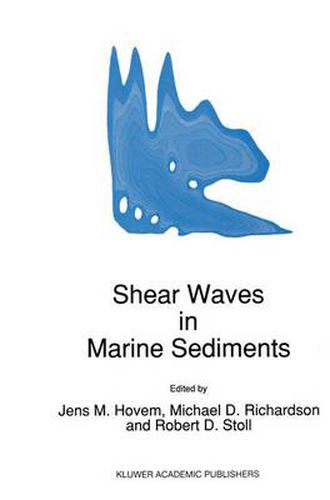Readings Newsletter
Become a Readings Member to make your shopping experience even easier.
Sign in or sign up for free!
You’re not far away from qualifying for FREE standard shipping within Australia
You’ve qualified for FREE standard shipping within Australia
The cart is loading…






This title is printed to order. This book may have been self-published. If so, we cannot guarantee the quality of the content. In the main most books will have gone through the editing process however some may not. We therefore suggest that you be aware of this before ordering this book. If in doubt check either the author or publisher’s details as we are unable to accept any returns unless they are faulty. Please contact us if you have any questions.
Shear waves and closely related interface waves (Rayleigh, Stoneley and Scholte) play an important role in many areas of engineering, geophysics and underwater acoustics. In some cases interest is focused on large-amplitude waves of low frequency such as those associ ated with earthquakes and nuclear explosions; in other cases low amplitude waves, which have often travelled great distances through the sediment, are of interest. Both low and high frequency shear and interface waves are often used for seafloor probing and sediment characterization. As a result of the wide spectrum of different interests, different disciplines have developed lines of research and a literature particularly suited to their own problems. For example water-column acousticians view the seafloor sediment as the lower boundary of their domain and are interested in shear and interface waves in the near bottom sediments mainly from the standpoint of how they influence absorption and reflection at this boundary. On the other hand, geophysicists seeking deep oil deposits are interested in the maximum penetration into the sediments and the tell-tale characteristics of the seismic waves that have encountered potential oil or gas bearing strata. In another area, geotechnical engineers use shear and interface waves to study soil properties necessary for the design and the siting of seafloor structures.
$9.00 standard shipping within Australia
FREE standard shipping within Australia for orders over $100.00
Express & International shipping calculated at checkout
This title is printed to order. This book may have been self-published. If so, we cannot guarantee the quality of the content. In the main most books will have gone through the editing process however some may not. We therefore suggest that you be aware of this before ordering this book. If in doubt check either the author or publisher’s details as we are unable to accept any returns unless they are faulty. Please contact us if you have any questions.
Shear waves and closely related interface waves (Rayleigh, Stoneley and Scholte) play an important role in many areas of engineering, geophysics and underwater acoustics. In some cases interest is focused on large-amplitude waves of low frequency such as those associ ated with earthquakes and nuclear explosions; in other cases low amplitude waves, which have often travelled great distances through the sediment, are of interest. Both low and high frequency shear and interface waves are often used for seafloor probing and sediment characterization. As a result of the wide spectrum of different interests, different disciplines have developed lines of research and a literature particularly suited to their own problems. For example water-column acousticians view the seafloor sediment as the lower boundary of their domain and are interested in shear and interface waves in the near bottom sediments mainly from the standpoint of how they influence absorption and reflection at this boundary. On the other hand, geophysicists seeking deep oil deposits are interested in the maximum penetration into the sediments and the tell-tale characteristics of the seismic waves that have encountered potential oil or gas bearing strata. In another area, geotechnical engineers use shear and interface waves to study soil properties necessary for the design and the siting of seafloor structures.